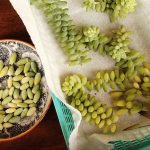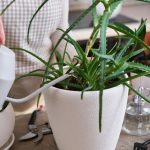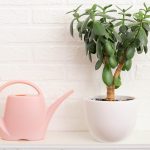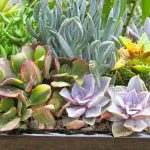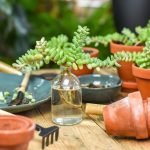To water your succulents effectively is an art. Finding the balance between providing enough moisture without drowning them is crucial. In this guide, expert gardener and plant enthusiast Madison Moulton shares five straightforward steps for perfecting your succulent watering routine.
Succulents are remarkable plants, recognized for their plump leaves and low maintenance needs. Thriving on neglect rather than constant attention, these hardy plants are well-suited for tough conditions and harsh climates.
Despite their resilience, many gardeners struggle to keep succulents alive. When these hardy plants succumb to an untimely demise, improper care is often the root cause. Mistakes in watering practices top the list of reasons for succulent fatalities.
Understanding the unique characteristics of succulents and their watering needs is paramount. Follow the five simple steps provided below to ensure your succulents receive the care they deserve.
Exploring the Care Complexity of Succulents
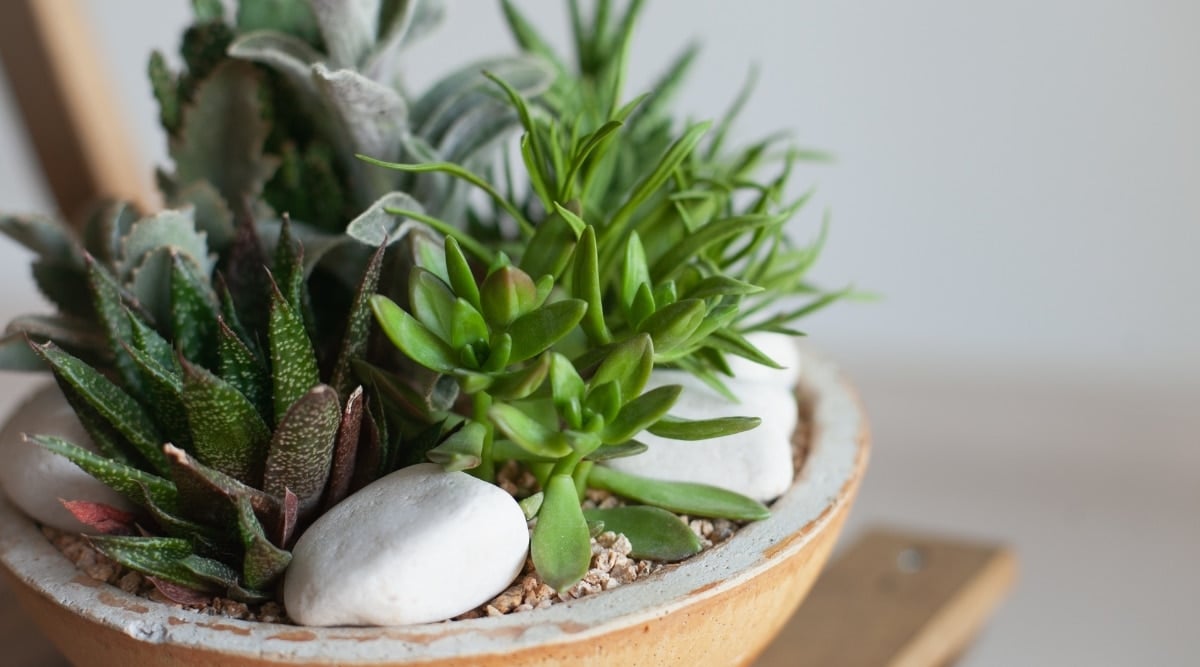
Despite their reputation as low-maintenance plants, many novice gardeners struggle to keep succulents thriving.
Deemed as the go-to plants for beginner gardeners due to their easy care requirements, succulents have left many aspiring horticulturists feeling discouraged after failing to keep them alive. This frustration often stems from mistaken watering practices.
Improper watering, notably overwatering, is a common pitfall for succulent enthusiasts. Although other factors can contribute to succulent woes, monitoring moisture levels is paramount to their survival.
Both overwatering and underwatering are threats to succulents, with excessive watering being the primary culprit in most cases.
Impacts of Overwatering

Succulents have evolved to endure prolonged periods of drought in their natural habitats. Equipped with fleshy leaves storing water reserves, they excel at water conservation and can withstand dry soil without adverse effects.
Due to their water-efficient biology, succulents absorb minimal moisture through their roots as they mature. Following a thorough watering, the roots distribute the water to the leaves for storage, allowing the soil to dry out.
When the soil retains excess moisture, it creates a breeding ground for fungal growth around the roots. Unaccustomed to persistent damp conditions, the delicate roots can quickly decay, leading to the demise of the plant if left unaddressed.
Incorrect timing of watering often contributes to soil oversaturation. People accustomed to caring for conventional houseplants may unknowingly follow the same watering schedule for succulents, unwittingly jeopardizing their survival.
Moreover, inadequate drainage, particularly in decorative containers without drainage holes, poses a significant risk. Stagnant moisture in the soil, a common issue in unsuitable containers, can trigger various problems, including plant fatalities.
Proper soil drainage is crucial when potting or repotting succulents. Regular potting mixes designed for other plants are unsuitable for succulents, as their water-retentive properties can spell disaster for these waterwise plants. To prevent premature death, succulents require well-draining, gritty soil mixes regardless of their planting location.
Perils of Underwatering
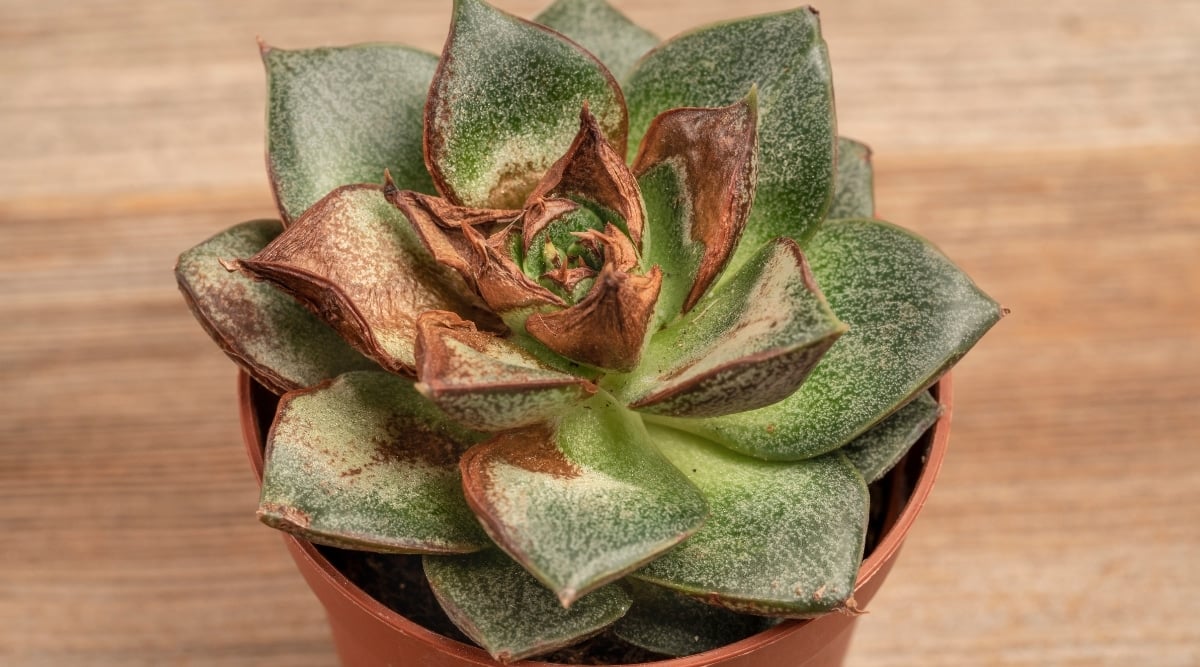
While succulents typically fall victim to overwatering, some may suffer the consequences of persistent underwatering. Proper research post-purchase is crucial, as succulents survive on minimal water.
This awareness of low water requirements can sometimes result in extreme underwatering habits in an attempt to care for these plants.
Remembering to water your succulents promptly is crucial, as delaying can lead to them suffering or even being forgotten entirely.
Underwatered succulents will present symptoms more slowly than overwatered ones. These robust plants can endure for months on their stored resources depending on their maturity and size. However, once these reserves deplete, the plump leaves will start to shrink, and the roots will deteriorate.
Succulent Water Needs
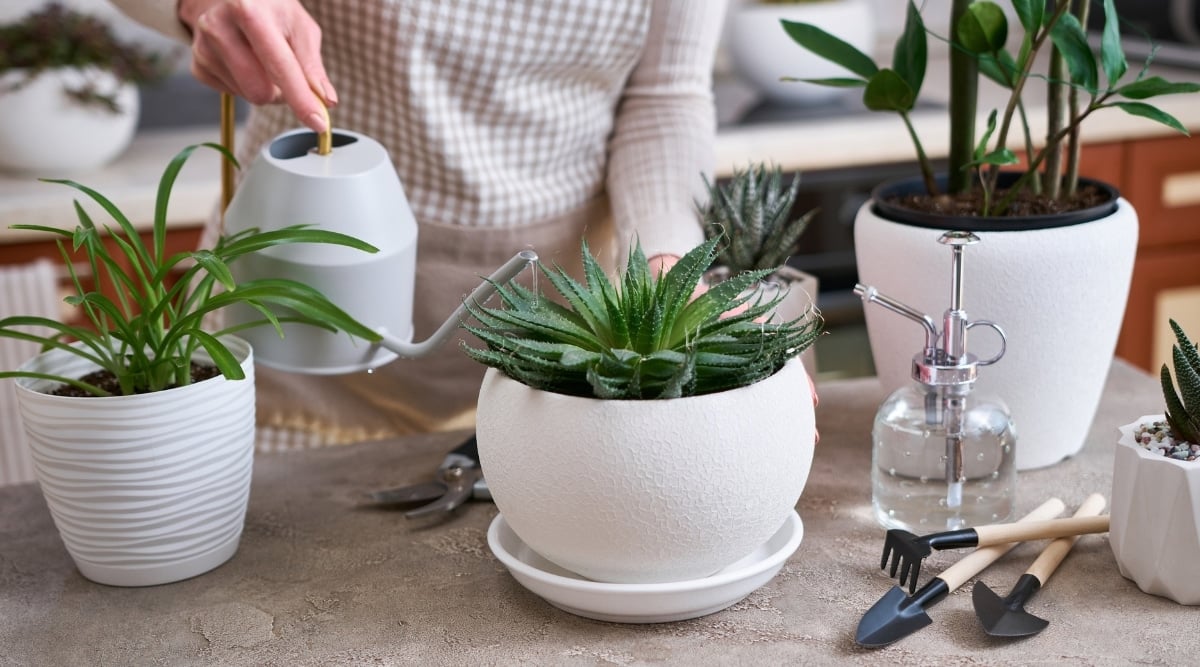
To maintain your succulents’ health, it is vital to strike a balance between overwatering and underwatering.
The watering regimen required depends on various factors. The succulent species, with some having greater water-retention capabilities than others, plays a crucial role. If unsure, assess the leaf thickness to gauge their water demands.
The plant’s size is another influencing factor. Smaller succulents in compact pots demand more frequent watering than larger, well-established plants in extensive soil volumes or garden settings. This does not imply they can go without water altogether but rather suggests longer intervals between watering compared to younger plants.
The growing environment is also significant in determining watering frequency. Succulents thrive in warm, sunny locations that recreate their natural habitats. In shadier spots, plants grow slower, requiring less water, and extending the time between watering sessions.
So long as the soil drains effectively, let it dry out completely before watering again. This could translate to a watering schedule ranging from once every two weeks to once every two months, with variations based on these factors.
Watering Succulents: Five Steps
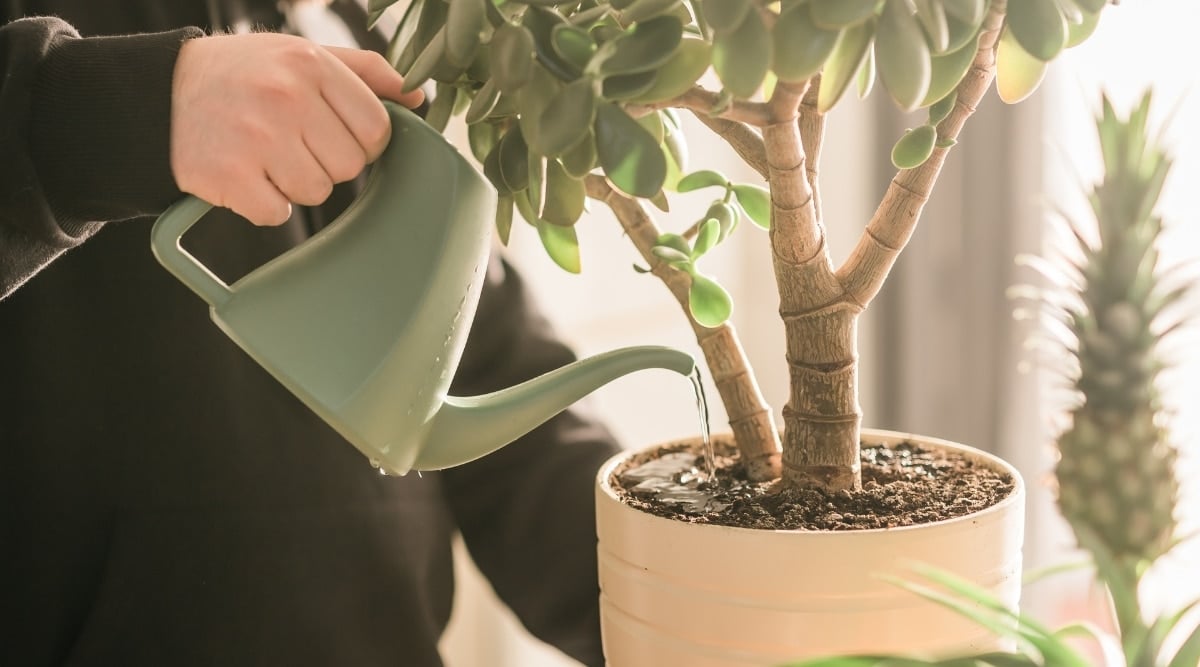
Deciphering when to water based on theoretical knowledge isn’t always straightforward in practice, leading to confusion and potential watering errors. Proper technique is crucial and can mitigate the risk of underwatering.
To address these challenges, here are five straightforward steps to guide your watering routine, eliminating guesswork and offering clear instructions for each watering instance.
As succulents are predominantly container-grown to cater to their year-round environmental requirements, these steps are tailored for potted plants. Nevertheless, the fundamental principles can be adapted for species planted directly in garden beds.
Step 1: Soil Moisture Assessment
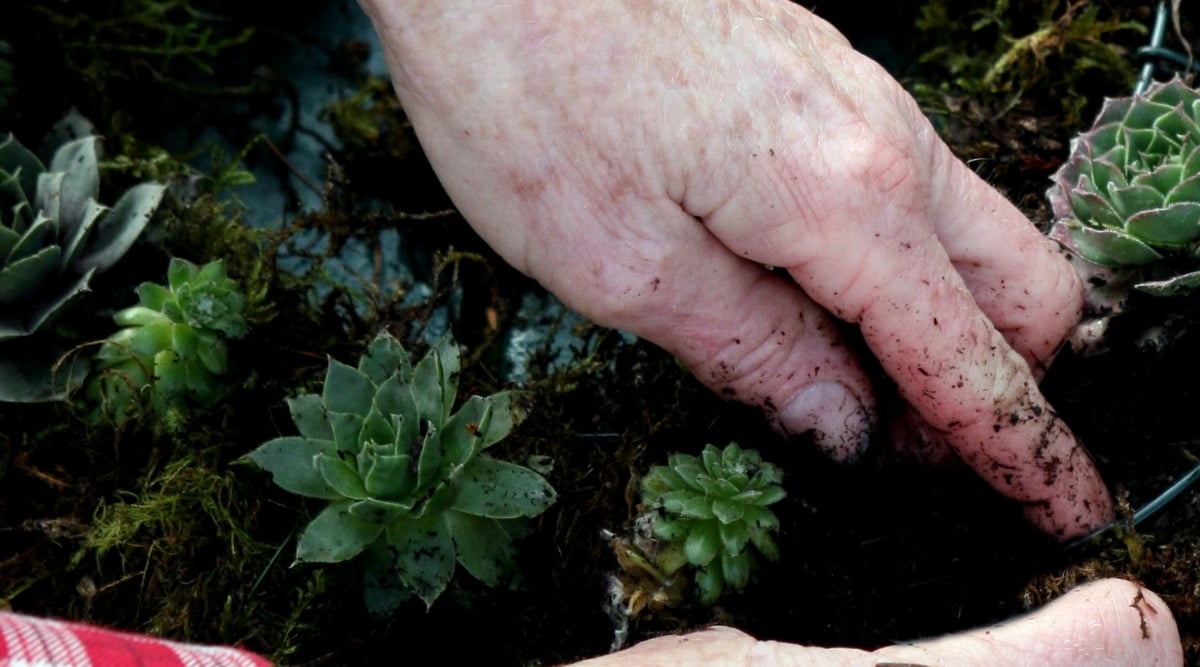
Begin by assessing the moisture level in the top layer of the soil. This evaluation provides insights into the remaining moisture content, indicating if watering is necessary.
To perform this test, dig into the top inch of soil by manipulating the surface layer. Moist soil will be slightly cold and more difficult to move compared to dry soil, which retains warmth better.
If the top couple of inches contain moisture, delay watering. This signifies sufficient moisture in deeper soil layers to sustain the plant without immediate watering. Recheck after a few days to monitor soil conditions.
If the top soil layer is dry, proceed to the next step.
Step 2: Pot Lift Test
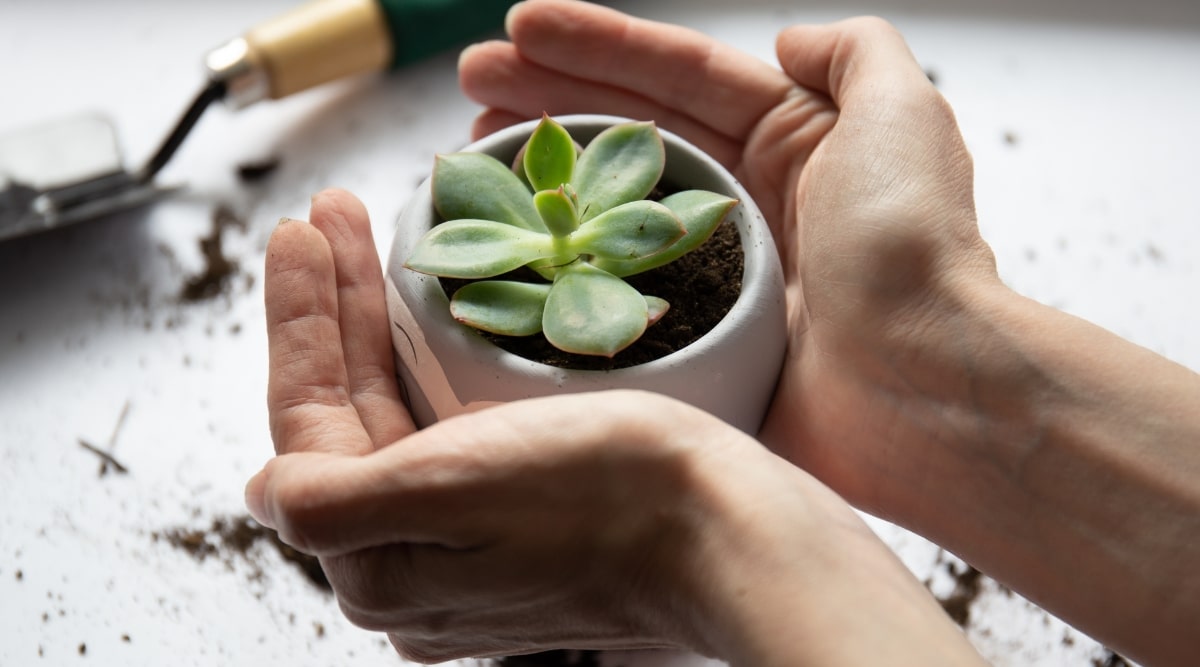
When it comes to succulents, determining when to water can be challenging. Unlike other plants, succulents prefer dry soil and need the soil to dry out completely before the next watering session. To avoid risking root disturbance, the simple act of lifting the pot can provide insight into the moisture levels deeper within the soil.
Moist soil is heavier than dry soil, so by lifting the pot, you can gauge the moisture content at the lower levels. Comparing the weight before and after watering will give you a sense of the average weight of the container, helping you decide when to water next.
If the pot feels considerably lighter than when completely dry, it may be time for watering. However, if it still has weight, it’s best to wait a few more days before testing again. Striking the right balance between underwatering and overwatering is crucial for the health of your succulents.
Step 3: Remove From Any Pot Covers

Ensuring proper drainage is essential for succulents. If your plant is in a decorative pot cover, be sure to remove it before watering to prevent the soil from becoming waterlogged. Additionally, never leave the pot sitting in a full drip tray for extended periods as excess moisture can lead to root rot.
Keep the bottom of the pot dry at all times to promote healthy growth for your succulents.
Step 4: Water Lightly
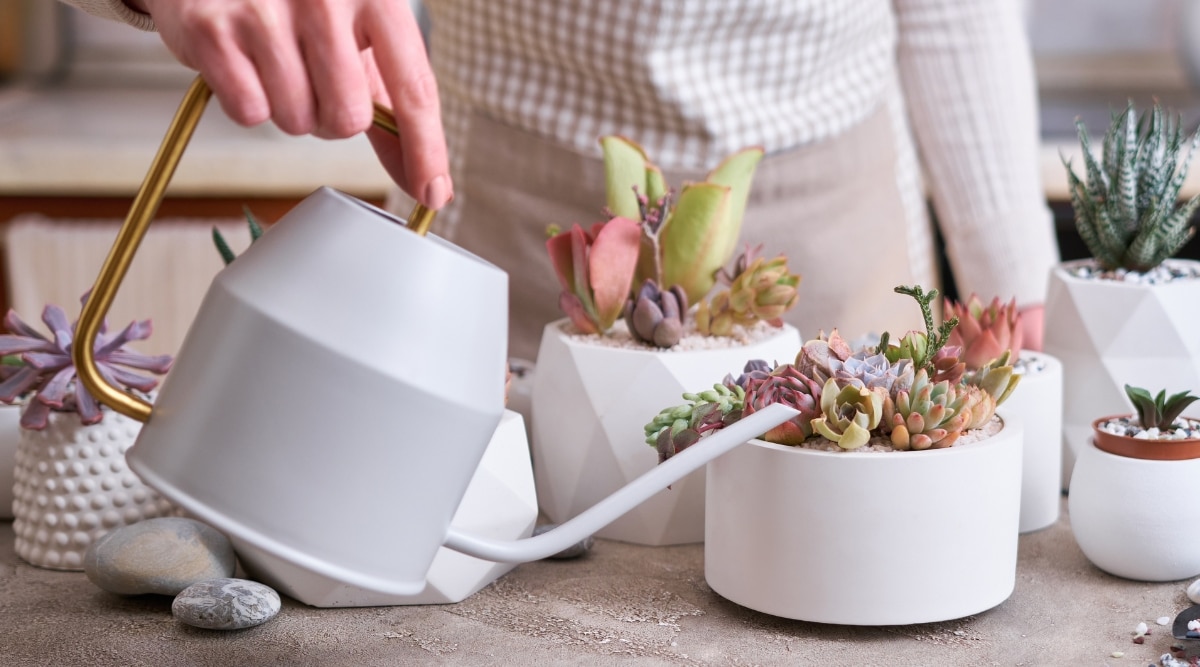
When watering your succulents, ensure the water reaches all parts of the container to fully hydrate the roots. Avoid watering the leaves directly as it can lead to rot. Water gently, allowing excess water to drain through the holes at the bottom of the pot.
Directing water at the soil mimics natural watering patterns for succulents, promoting healthy growth and preventing moisture-related issues.
Step 5: Replace
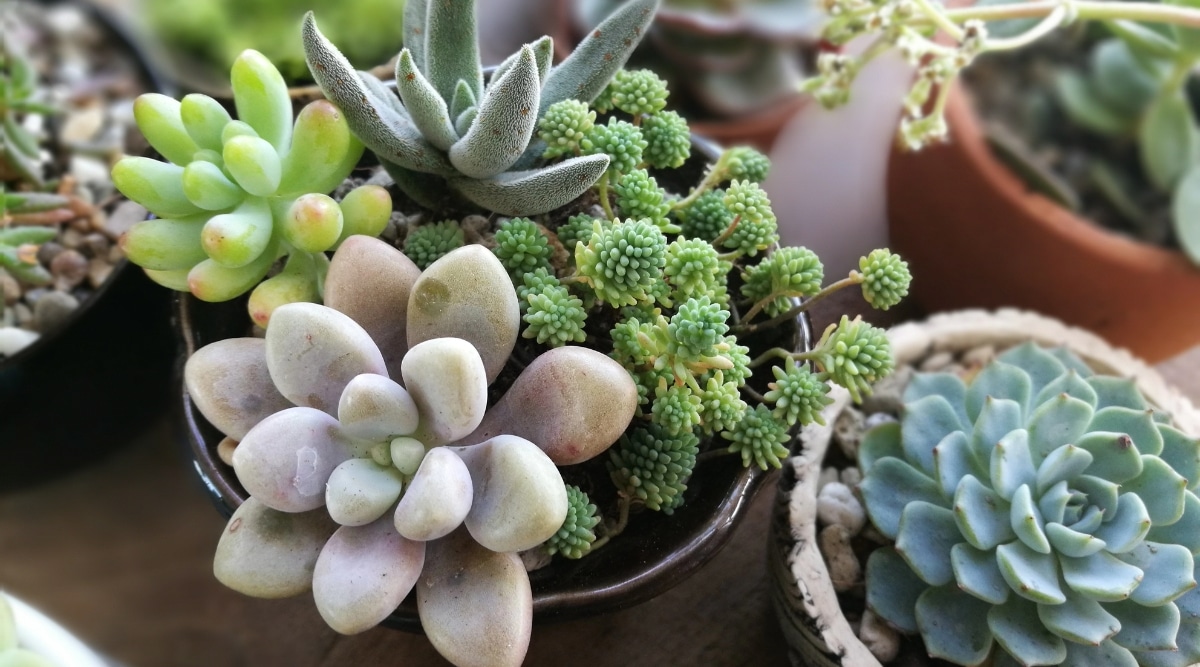
After watering, return your succulents to their original spots to provide them with the right light conditions. Avoid leaving them in standing water and ensure excess water has drained completely before returning them.
By following these simple steps, managing your succulents becomes more straightforward, leading to healthier and thriving plants with minimal effort.

